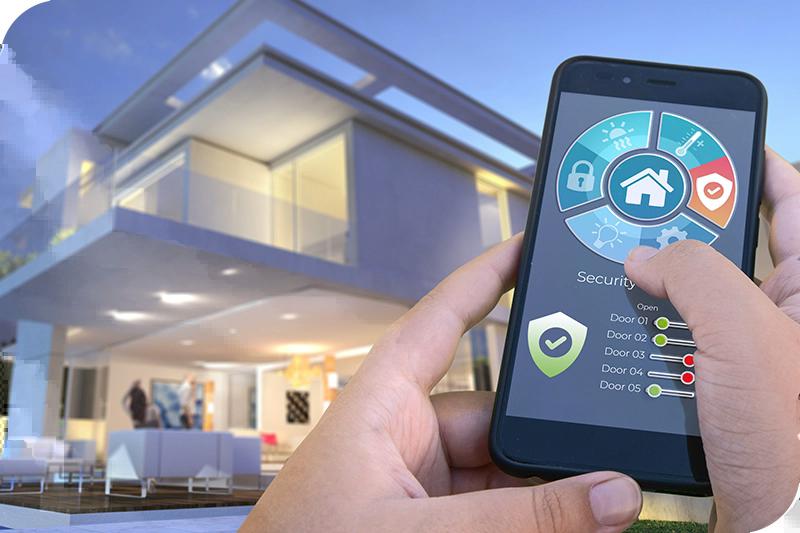Integrating Door Access Control System Into Home Automation: 5 Things Installers and Integrators Need to Bear in Mind
 Lukáš Psota, 11. 11. 2022 | 5 min read
Lukáš Psota, 11. 11. 2022 | 5 min read
Over the summer, the research firm ResearchAndMarkets published a report on the smart home automation market. It forecasted that the market will reach $187.8 billion globally by 2028, rising at a compound annual growth rate of 15.2% over that period. Part of this growth will come from home automation systems expanding to incorporate IP door access control technologies, a trend which is starting to become visible in many countries across the world.

In response to these findings, we want to share some guidance to help integrators and installers who are considering including IP access control systems in customers’ home automation. What’s more, to mark the end of European Cybersecurity Month 2022, we’re including some advice on how to remain cyber secure, too. We often speak about the importance of cybersecurity and make it one of our top concerns – as should you. Read on for more on that important topic!
So, without further ado – here are our five core pieces of advice to keep in mind when integrating access control system for doors with home automation:
1. Bear in mind the full range of security benefits available
This is something we wrote about earlier this year. For many homeowners looking to take their security system to the next level, integrating access control and home automation can give them exactly what they’re looking for – but many people are still not aware of the full range of options open to them.
For example, imagine that a burglar is prowling around and rings the intercom to check if anyone is home. With an IP intercom, you can receive the call on your smartphone – not only giving you the ability to see and talk to them but also convincing them that you’re at home, deterring any foul play. What’s more, connecting the intercom to a home automation system means you can take action – by turning on the lights in your house remotely, for example.
In our experience, these are the kinds of upgrades that homeowners value – not because they’re ‘cool’, but because they have a tangible impact on making their property more secure.
2. Consider all convenience upgrades that IP access control systems can offer
It’s easy to think of access control solely in terms of intercoms, and it’s true that connecting IP intercoms to smart home systems can provide an array of great new options for homeowners. A particular favourite is the ability to let couriers – a major plus given the huge rise of e-commerce over recent years.
But it’s not just about intercoms and it’s a shame to not also take advantage of other device integrations. Integrating a product like the 2N® Indoor Touch 2.0 indoor station into home automation solutions from companies such as Control4, Savant, RTI and Crestron can turn the unit into the home’s central control panel, regulating everything from the lights, air-conditioning and music system through to the garage door and lawn irrigation system.
3. Choose devices based on open standards
Maximising the convenience benefits of integrating door access control system into home automation requires technologies that work well together. Our advice to installers and integrators is therefore to avoid proprietary, closed systems which can’t be interconnected with different brands. Instead, prioritise devices which are based on open standards or that have an open API, as they can easily be integrated with third-party technology.
Ultimately, this is about giving yourself the flexibility to select a solution which is both the right fit for your customer and the most cost-effective option available.
4. Remote management saves both time and money
Home automation customers typically value the flexibility to add new features to their smart home quickly and easily. Remote management options like the My2N Management Platform can facilitate this, providing integrators and property managers with the opportunity to work more efficiently and save their customers money at the same time.
5. Prioritise the cybersecurity of IP door access control devices
Last, but my no means least – cybersecurity.
It shouldn’t need stating, but cybersecurity is just as important as physical security – and any weak spots in a home automation system risks cyber-attacks on a smart home. We’ve already published seven best practices for cybersecurity that integrators and installers should bear in mind when working on all projects, and a Hardening Guide that explains how to configure 2N products in a truly secure way. Follow these rules and your customers will enjoy all the security benefits of integrating access control into their home automation system, without adding a layer of risk from cyber-attacks.
If we had to sum it all up in one sentence?
There’s a huge potential value in integrating IP door access control into home automation systems, but if customers are to enjoy the full benefits and feel safe at the same time, it needs to be done right.